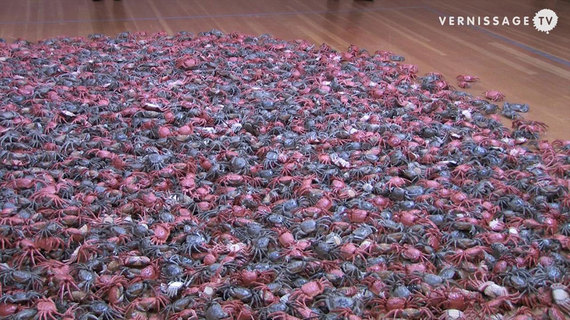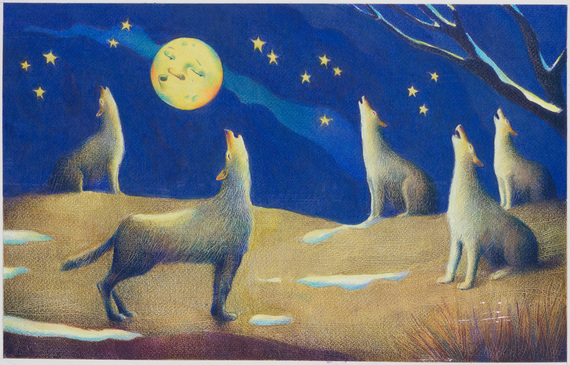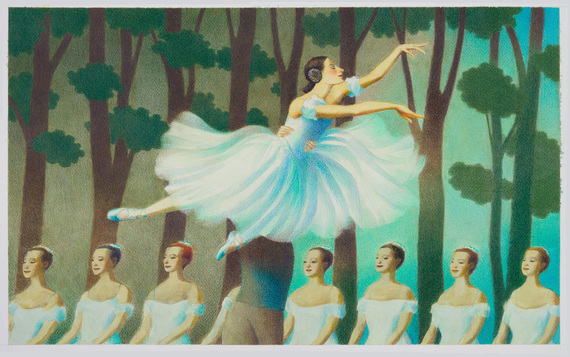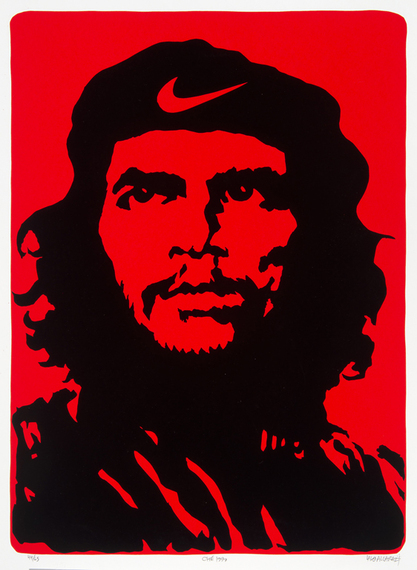![2014-04-03-theinternet.jpg]()
Matt Martians and Syd The Kid (Photo: Devon Jefferson)
I'm guessing you've heard of the California hip-hop collective
Odd Future (OFWGKTA). If you haven't, it's probably because you're too old (I'm half joking), or you live in a country where few people give a damn about what's prevalent in the United States. At any rate, Odd Future hit cyberspace with a sonic boom in 2010, and has since launched several successful solo careers and subgroups, including Frank Ocean, Earl Sweatshirt, MellowHype and
The Internet.
Known primarily for their irreverence, teen angst and rap music, Odd Future at first glance seems an unlikely inception for The Internet, a sophisticated Neo-Soul band headed by singer/producer
Syd The Kid and producer
Matt Martians. However, upon closer inspection, one will find the band embodies the same spirit of rebellion present in all of Odd Future's offerings.
On tour following the release of their latest album
Feel Good, Syd The Kid and Matt Martians sat down for an exclusive interview backstage at Chicago's Bottom Lounge. After giving a phenomenal performance, the pair spoke about their band's direction, pet peeves, social media and Soul.
Are there any questions you're sick of being asked by music journalists? Air your frustrations.
Syd The Kid: Um, yes. [Laughs] I'm tired of being asked, "So how did you guys form The Internet?" That's on our website, you know? All that info is on the website under the "Bio" section. Also, when fans tweet us like -- "So when you all coming to Chicago?" and we just left Chicago.
Most of our fans are not trying to be facetious. We have really great fans. I like our fans as people. They're dope, open-minded, super polite and very respectful. And most of them are being dead-ass serious like, they didn't know we were just in the city they're asking about. [Laughs] And it's still irritating.
Matt Martians: I'd say, when journalists expect us to sound like the rest of Odd Future and they say, "Oh, this sounds different" -- I'm tired of hearing it -- I think a lot of people don't expect us to make the kind of music we do.
We want to bridge the gap from having a band that people our age can relate to and be like, "Wow, they're up there playing those instruments," and there's something more to "urban" music than just rap. Rap music samples this type of music, you know, Soul? I feel there needs to be a band that can bridge the gap and bring back that live sound.
Our music has a lot of depth, and I don't think people give us enough credit for that. We have songs with Erykah Badu and Coco O from Quadron that are super musical. A lot of people draw from a few popular songs instead of really going into the catalog.
Journalists used to call Syd a rapper in fucking interviews when we first came out. I'd be like -- [Laughs]. Did you listen to the album? They'd call Syd a rapper, and then rate our album. What rap verse did you hear on the album? Like, [Laughs].
Have Odd Future fans embraced your Neo-Soul sound?
Syd: Yeah. It's interesting because all of my fans before this happened were Odd Future fans. They were fans of me as Tyler The Creator's DJ -- as Odd Future's DJ. They were fans of me being silent, but moving a lot and playing turned up music to make everybody go crazy and get ready for the show. Jumping up and down and going ham. That's what they were fans of.
Had I never done this, had I stayed DJ'ing for Odd Future, I'd probably have like -- shit, 300,000 followers on Twitter right now. But because I started over, I deleted my Twitter when I formed the band and we started a brand new one, because I was getting the wrong attention. And that's why I had to start over. So I'm thankful that I did. I think honestly, our fans are not Odd Future fans. We don't have the same fan base at all.
And that's why we have to separate ourselves to a certain extent. It wasn't because we had beef with OF. It wasn't because we wanted to leave OF. We're still very tight with everybody, you know? We're still a very tight-knit family. I'm OF for life.
Matt: It's simple. We had to make our own sound. Like I mentioned before, people were calling Syd a rapper in articles, and there were clearly people who just saw Odd Future -- like I said, they'd scratch the surface and not actually dig into what it is.
Syd: And Tyler's fans don't get our sound. Hodgy's fans don't get it, Domo's fans -- nobody else's fans really get our direction.
Matt: During our first tour, there were definitely Odd Future fans coming because there was an Odd Future show, and they were feeling obligated because it was an Odd Future thing. And this time around, you'll see maybe two or three Odd Future fans in the crowd.
Syd: And everybody else in the crowd are just people who love Soul music.
![2014-04-03-0004423R1E013.jpg]()
(Photo: Devon Jefferson)
An evolution of sorts.
Syd: Yes. When we first formed the band, we weren't going to perform live. We were just gonna put out albums. That was the plan initially. Because I'm not a singer's singer. I've just started singing, you know?
I started taking vocal lessons steadily. I started taking it seriously. So when we made Purple Naked Ladies[The Internet's first album], Matt and I made beats and wanted to get a bunch of other artists on them, but we couldn't -- you know? It's harder than you think to get people on your beats. That shit's not easy. So Matt and I ended up writing a bunch of songs to the beats, and I'd sing on demos for the other people to come in and sing, and we ended up using all the demos as the album. And that's why I sound so different live than on Purple Naked Ladies, because I'm actually trying now.
And you've perfected your stage presence.
Syd: I study -- I just started studying a lot of people's stage presence. Since the beginning of 2014, I've been studying Jamiroquai, D'Angelo and Frankie Beverly. Justin Timberlake has a great live show. Usher's live show is great. And you know, certain people like that, but I don't dance like that, so I take what I can from each person.
Ours is more gradual, you know? We have to keep going and be persistent so people know, "Oh, they're not gonna give up that quickly." The difference between the bands that make it and the ones that don't, is persistence. You could be the shittiest band on Earth, but if you keep doing that shit for ten years, you have tenure.
What do you think of your generation?
Syd: Actually, I want to say I hate my generation, but I don't. I mean --
[Laughter]
Syd: I know! It's weird. Naturally, doesn't everyone wanna say like, "Our generation is weak as fuck." You have to cut us some slack though, because this is what we were given. This is what we were given, and we're making the most of it. A lot of us are still learning. There are some of us who might be on Twitter too much, and might not be living in the real world. And there are ones who have been there, and saw another side and decided to stop. And there are people who need to do that, who need to be on social networking all the time, because that's how -- that's their livelihood. That's how they make a living. You never know.
Matt: Technology is tolerable now. I think in the near future it will come to a point where it's not gonna be fun. Technology -- we already have too much on our phone.
Syd: Half the people in the room right now are on their phone. Look.
[Laughter]
I'm recording this interview with a phone.
Matt: We're the generation that never really had to suffer. We never had a Great Depression or something -- a great "problem" that happened to us like other generations had. We're a very spoiled generation. And it's cool, but it's like, it's not really our fault at the same time, you know what I mean? It's really what we were given. Like, for instance, I'm 25 years old. I got my first phone in 10th grade, and I was geeked, like, yo. Yo! Fast forward, fifth grade, you got an iPhone. We did an interview at a middle school last year, and the kids were like, "Let's take pictures," and everybody whipped out an iPhone. Fifth graders. That is some crazy shit.
Syd: Older generations have more blind faith. They believe in things they have never seen, never touched and we question a little bit more. We have more access to information.
Matt: Odd Future met on the internet, that's why we keep the name -- The Internet.
What kind of imprint would you like to leave on the world?
Syd: I want to put on a great show. I want there to be an unanimous vote that we put on a great fucking show. I told you before, I've been studying D'Angelo, Jamiroquai and Frankie Beverly pretty much. Those three. And one thing I can say about all of them is they all put on a great show. I mean like, just energy. Just pure energy. Even if it's chill energy, it's -- you know? It's all love. I want to be a great performer.
(Note: Special thanks to The Internet band: Tay Walker-Keyboard, Patrick Paige-Bass and Christopher A.Smith-Drums)







































